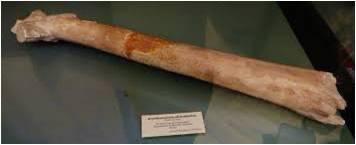You are here
Holding layers of mystery, ‘great wall’ of Jordan winds its way through the ages
By Maria Weldali - Jan 15,2020 - Last updated at Jan 15,2020

Khatt Shebib is located in the south of the Kingdom and spans a distance of approximately 140 kilometres, according to Professor of Archaeology at the Hashemite University Muhammad Waheeb (Photo courtesy of Abdelrahem Alarjan)
AMMAN — Known locally as Khatt Shebib, Jordan’s own “great wall” is the second-longest structure built by humans next to the Great Wall of China, according to a Jordanian scholar.
Unlike its east-Asian counterpart, however, it does not seem to have been used for fortification, leaving its purpose an item of speculation for archaeologists and historians, Professor of Archaeology at the Hashemite University Muhammad Waheeb told The Jordan Times on Tuesday.
Located in the south of the Kingdom, the wall spans a distance of approximately 140 kilometres, making it the region’s longest structure. It stretches northwards from Ras Al Naqab in Maan Governorate to the Wadi Al Hasa area of Tafileh Governorate, Waheeb said.
“Given the wall’s length, it seems that the construction period had phases, which implies that various cultures left behind proof of their existence through its architecture,” Waheeb said, noting that archaeological evidence from the wall suggests that it was built during the Nabataean period (312 BC–106AD).
Furthermore, Khatt Shebib reflects the geology of its setting, as the rocks used in its construction vary according to the geological framework of the area, he added.
Some evidence seems to show that the wall was used for agricultural purposes, as it was no more than a metre high, the professor noted, adding that the inhabitants of the area, especially to the west, were known to be farmers.
During the Nabataean period, however, there were many kingdoms in the region, so Khatt Shebib may have marked a boundary between different empires, the scholar added.
Currently, field studies are being conducted to ascertain the wall’s purpose, with another hypothesis suggesting that it could have linked various trade routes in the region, Waheeb noted.
“We are still authenticating the area’s role in ancient times, especially focusing on the wall’s ancient sites,” he said.
Due to its magnitude, in 1948 the site garnered the attention of British diplomat Alec Kirkbride, who wrote preliminary observations on the wall. In the 1980s, aerial photography of Khatt Shebib was taken by David L. Kennedy, a British archaeologist and historian, according to Waheeb.
“As local archaeologists, we began to turn our focus to full implementation in 1992 by bringing together artefacts and features that we collected during excavation work,” said Waheeb, who is also the president of the scientific committee for examining the wall.
In 1996, the archaeologists formed a partnership with the Military Culture Department, which resulted in the creation of a museum at Prince Hashem Bin Al Hussein School in Ras Al Naqab that displays a number of artefacts and items discovered in the area over the years.
“What attracts tourism to the area is the presence of the museum, the ‘great wall of Jordan’, the discovered antiquities and sites and Al Sharat mountain range as well as the trade routes,” Waheeb noted.
On January 1, archaeologists met with President of the Jordan Tour Guides Association Raed Abdulhaq and officials from the Military Culture Department and the tourism sector to discuss the significance of Khatt Shebib, aiming to define its role in improving tourism, he said.
According to Abdulhaq, an expedition to access the wall’s most significant features was organised during the meeting.
“Endeavours are being made to study the area with the aim of transforming it into a tourist destination after carrying out the proper maintenance,” Abdulhaq told The Jordan Times on Tuesday.
Related Articles
AMMAN — Surrounded by fertile valleys and highlands, the archaeological structures of Iraq Al Amir are rich in historical narratives of the
AMMAN — Ancient fossil remains have revealed that Jordan once hosted one of the largest flying reptiles in the world, known as Arambourgiani
AMMAN — A recently published book details the efforts of Jordanian scholars and archaeologists that resulted in the discovery of Prophet Lut













